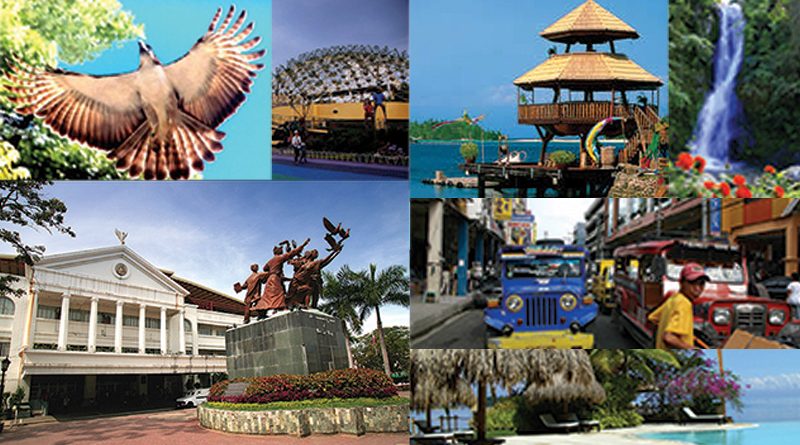Eye Mindana

Mention Mindanao and images of war, terrorism, and violence cloud up in mind. For years, this island dubbed as Land of Promise earned popularity due to intermittent conflicts affecting some parts of the island. These conflicts are isolated cases but a gloomy public opinion is shaped when most news reports generalize the headlines.
Battling the stereotype on Mindanao has been a typical subject in various media conventions yet the negative label still sticks on Mindanao’s identity. For instance, when an armed conflict is happening in the province of Sulu – located in the southern tip of the Philippines – it is peculiar for some people in other places in the country to think that whole Mindanao is experiencing war. The sad fact: most people remember more of the bad news; while the sad truth is only a little good news about Mindanao makes it to national and international reports.
However, despite the bleak image Mindanao has earned, there remain good things happening on this island. For example, in the Autonomous Region in Muslim Mindanao (ARMM) where sporadic armed conflicts occur, commerce has been upbeat as business groups – both Filipino and foreign – forge partnerships with ARMM entrepreneurs. Last year, the Makati Business Club committed a trade link with the ARMM business community to entice more investments in the region. Market linkages will help tap ARMM’s rich agriculture and marine resources which can result to more jobs for people.
Infrastructure in the region has improved, evidenced by the paved roads, expanded ports, bridges, and water systems. Education is also among the top priorities for development with schools from as far as the southernmost province of Tawi-Tawi now connected to the information superhighway, more classrooms and books added to schools, and more teachers and students are being trained for English proficiency. Foreign funding has largely contributed to these areas through various development programs initiated by donor nations like the United States of America, Japan, Canada, and Australia, in partnership with local government units.
Mindanao tourism is also on the upswing as resorts, hotels, food chains, and malls continue to sprout all around the major cities and provinces. Airline providers contribute to this development by giving fare discounts, even offering zero seat sales. In Western Mindanao, international flights to Malaysia and Indonesia are available to and from Zamboanga City, opening more opportunities for trade and tourism.
In 2007, Davao City was included in the top 10 Asian Cities of the Future Award by the Singapore-based consulting firm AsiaBIZ Strategy Pte. Ltd. Quezon City in Luzon and Cebu City in Visayas also made it to the prestigious list. The award was based on business and investment opportunities in the city including the quality of life, infrastructure, human resources, business affability, and promotion strategy. Aside from its business potentials, Davao City is typhoon-free and fruits abound all year round.
However, one of the issues that confront Mindanao today is the protection of its natural resources. Environmental groups continue to lobby for the preservation of Mindanao’s natural resources while its people face concerns over mining, deforestation, and the contamination of their watersheds. In Davao Oriental, for example, the biodiversity-rich Mt. Hamiguitan Range is in the brink of being spoiled due to the penetration of four multinational mining companies. In Mt. Hamiguitan is found the famous Bonsai Forest, and it is also home to the great yet critically endangered Philippine Eagle and other species on the verge of extinction.
In 2004, President Gloria Macapagal-Arroyo declared Mt. Hamiguitan and its vicinities as a protected area under the category of a wildlife sanctuary. Ironically, the four mining applications were approved by the Department of Environment and Natural Resources a year after it was proclaimed as a protected area. The presence of the mining companies has since threatened the stability of the environment and the biodiversity in the area. Aside from the alarming destruction of natural resources, the livelihoods of tribal villages around the mountains are also at risk. More needs to be done to support Mindanao’s environment and its people certainly do not wish to be up on the headlines as victims of natural calamities.
Nonetheless, in the midst of the stereotypes and obstacles, Mindanaoans remain optimistic that this island will continue to bloom to its fullest. Despite its diverse culture and various ethnic backgrounds, Mindanao finds unity through its people who value peace, aim for prosperity, and the faith to progress. Try Mindanao!
About the Author

Irene Melissa A. Macahis
Irene is a freelance writer who is also a chaser of sunrises and sunsets and looks forward to climbing mountains or basking in the sun on white-sand beaches during vacations. She lives in the vibrant City of Davao and works full time as an administrative assistant and communications in-charge at Praise Revival Center.

